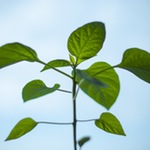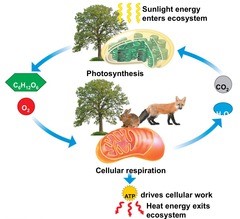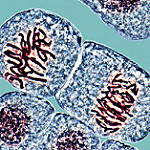Biology Q2
Section outline
-
-
Mrs. Swenson • tswenson@mountainheightsacademy.org • 435.915.6917
-
-
-
Start Here. Learn How to Navigate This Course.

-
-
Water and Biological Molecules

Water is the driving force of all nature ~ Leonardo da Vinci
-
Learning Objectives:
- Explain how the properties of water (e.g., cohesion, adhesion, heat capacity, solvent properties) contribute to maintenance of cells and living organisms.
- List the major chemical elements in cells (i.e., carbon, hydrogen, nitrogen, oxygen, phosphorous, sulfur, trace elements).
- Identify the function of the four major macromolecules (i.e., carbohydrates, proteins, lipids, nucleic acids).
- Explain how the properties of water (e.g., cohesion, adhesion, heat capacity, solvent properties) contribute to maintenance of cells and living organisms.
-
Lesson and Assignments:
-
Review:
-
Enzymes

Nothing in life is to be feared, it is only to be understood. Now is the time to understand more,
so that we may fear less ~ Marie Curie
-
Lesson and Assignments:
-
Review:
-
Test:
-
Photosynthesis

Land, then, is not merely soil; it is a fountain of energy flowing through a circuit of soils, plants, and animals. ~Aldo Leopold
-
Learning Objectives:
- Distinguish between autotrophic and heterotrophic cells.
- Illustrate the cycling of matter and the flow of energy through photosynthesis.
-
Lesson and Assignments:
-
Review:
-
-
Cellular Respiration

The important thing in science is not so much to obtain new facts as to discover new ways of thinking about them. ~ Sir William Bragg
-
Learning Objectives:
- Illustrate the cycling of matter and flow of energy through respiration.
- Measure the production of one or more of the products of either photosynthesis or respiration.
-
Lesson and Assignments:
-
Review:
-
-
Cell Theory

The cause of nutrition and growth resides not in the organism as a whole but in the separate elementary parts--the cells. ~Theodor Schwann
-
Learning Objectives:
- Describe cell theory and relate the nature of science to the development of cell theory.
- Identify the parts of a compound microscope.
- Correctly use a microscope to view specimens.
-
Lesson and Assignments:
-
Review:
-
Test:
-
-
Cell Organelles
Science Rules! ~ Bill Nye
-
Learning Objectives:
- Describe the relationship between the organelles in a cell and the functions of that cell.
- Describe the relationship between the organelles in a cell and the functions of that cell.
-
Lesson and Assignments:
-
Review:
-
-
Cellular Transport

Any living cell carries with it the experience of a billion years of experimentation by its ancestors ~ Max Ludwig Henning Delbruck
-
Learning Objectives:
- Describe how the transport of materials in and out of cells enables cells to maintain homeostasis.
- Compare and contrast osmosis, diffusion, and active transport.
-
Lesson and Assignments:
-
Make sure to watch this before doing the 7.3 lab. You must understand Osmosis to understand what is happening in the lab.
You will need to give yourself 2 days to complete 7.3. The last day to set-up 7.3 is Thursday, December 7th.
-
Review
-
Complete this study guide before you take Test #3. You can use the study guide to help you on the test.
-
Test:
-
-
Cell Division

In regular cells, like in bone and blood, the cells divide. The great majority will not divide. The neurons you're born with are pretty much what you have at the end of life ~ Danilo Tagle
-
Learning Objectives:
- Explain how cells divide from existing cells.
-
Lesson and Assignments:
-
You get 2 attempts on this assignment. So, if you got a low score go back and try it again.
-
Review:
-
-
Plant and Animal Tissues

There are far, far better things ahead than any we leave behind. ~ C.S. Lewis
-
Learning Objectives:
- Compare and contrast the structure and function of different cell types.
- Relate the cells that make up tissues to the structure and function of the tissue.
-
-
Lesson and Assignments:
-
Review:
-
-
Plant Organs

He that plants trees, loves others besides himself.~Thomas Fuller
-
Learning Objectives:
- Describe the function of the major plant organs.
- Relate the structure of organs to the functions of organs.
-
Lesson and Assignments:
-
Review:
-
Test:
-
-
Flowers and Plant Reproduction

Always do your best. What you plant now, you will harvest later.~Og Mandino
-
Learning Objectives:
- Describe the function of the major plant organs.
- Relate the structure of organs to the functions of organs.
-
Lesson and Assignments:
-
Review:
-
Science Journal:
-